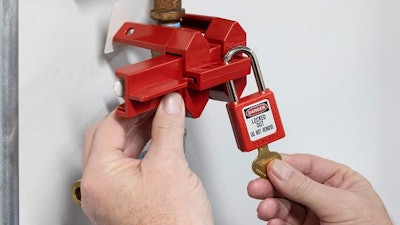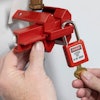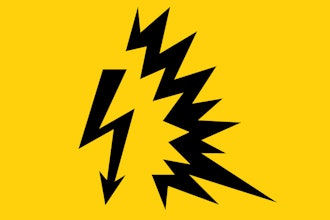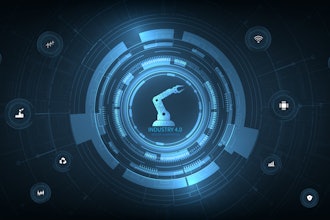
As we engage with a variety of industry professionals, including managers for safety, facilities and plants, the question often arises - what is new with lockout? How can we create an environment that is safe, compliant, efficient and accountable to those that apply lockout daily and those that lead these organizational safety programs?
Simply put, organizational requirements must adhere to the minimum standard set forth by OSHA 1910.147. OSHA outlines within the standard what needs to be done to ensure managers are clear on what a safe lockout activity (service or maintenance event) is but falls short of explaining “how” to accomplish this and what strategy to implement to meet at least the minimum requirements.
Without a universal strategy, it’s left to the discretion of the safety, facility, frontline workers and plant managers to figure out, giving rise to a myriad of philosophies on how to reach the goals of safety, compliance, efficiency, and accountability. Since 1910.147 was implemented in 1989, many in the industry are still working out how to effectively adhere to this core legal standard.
Evolution of Lockout Procedures
Prior to the implementation of the OSHA standard, the procedural steps and training for shutting down, isolating, blocking and securing machines or equipment to control hazardous energy, were verbally shared by trade workers on the jobsite and weren’t formally written down to reference. This process made it difficult to track, maintain, and hold employees or a broader organization accountable from a safety and compliance perspective.
Since 1910.147 was implemented, the standard required that organizations create a written document to ensure a zero-energy state could be accomplished for all equipment that was serviced and maintained, plus that had more than one energy source. Today, written lockout procedures have evolved from being handwritten on a piece of paper, to being digitized on a computer, allowing for easy creation or modification.
Today’s approach of writing lockout procedures through software or an app allows workers to easily capture the isolation points by selecting pre-populated hazardous energy, magnitude measurements and the type of lockout devices needed to ensure a zero-energy state. This digitized procedure can then be printed out or synthesized into a QR code linking to the procedure, to be posted at the machine point of use for the authorized employees.
Through the use of digitized procedure, lockout software has created a layer of accountability for the authorized employee, not only to adhere to an organization’s safety policies, but also to the standard 1910.147. This ensures that procedures are consistently inspected, made current and accessible to workers.
Connecting Authorized Employees to Written Procedures through Lockout Devices
Safety, Facility, and Plant Managers can create an environment that is safe through training, incentive programs, consistent documentation of policies and procedures, and at times through discipline. While all these tactics are great ways to increase an organization’s safety record, they don’t 100% ensure that authorized employees are holding themselves accountable to executing the proper steps to zero energy prior to servicing and maintenance of equipment.
The only efficient way to truly harness a higher level of accountability and forge a stronger connection between an authorized employee to a lockout procedure, is through a digitized lock or lockout device. Today, this newly developed connected lockout software can ensure that an authorized employee is virtually plugged in to a safety lock and a written procedure, ensuring that all lockout activity can be recorded in real-time or later. Essentially, connected lockout is where written procedures from the past can meet the modern technology of today, allowing for accountability to a lockout activity to be achieved.
The important foundational principles and values of lockout management will always stay the same - achieving a zero-energy state to ensure the safety of authorized personnel, but HOW we achieve those goals will evolve.
The digital nature of connected lockout processes can ensure a greater peace of mind and increase safety accountability within an organization. If we as an industry can recognize and take advantage of these new tools that advance safety, we can increase accountability and efficiency by understanding where and why a machine needs to be locked out.























